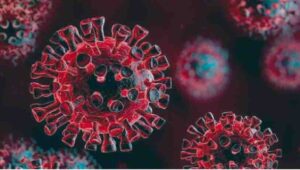Washington – A study just published in the Journal of Nutrition shows that pearl millet bred to contain more iron can provide young children with their full daily iron needs.Pearl millet is an important staple food in semi-arid regions of India and Africa, where iron deficiency is widespread. Lack of iron impairs mental development and increases fatigue. Severe anemia, often caused by iron deficiency, increases the risk of women dying in childbirth. These new varieties of pearl millet are being conventionally bred to provide more dietary iron to rural farming communities in arid drought-prone regions where few other crops thrive.
In the study, iron-deficient Indian children under the age of three who ate traditionally-prepared porridges (sheera, uppama) and flat bread (roti) made from iron-rich pearl millet flour absorbed substantially more iron than from ordinary pearl millet flour, enough to meet their physiological requirements. As an added bonus, this iron-rich pearl millet also contained more zinc, which was similarly absorbed in sufficient amounts meet the children’s full daily zinc needs. Lack of zinc in children can lead to stunting and impaired immune response against common infections.
According to Dr. Michael Hambidge, Pediatrics Professor Emeritus at the University of Colorado in Denver, who led the research team, the findings represent a promising development for public health. ’In the areas where pearl millet is the main food staple, this study offers a serious, potentially important, strategy to battle malnutrition,’he says.
The principal investigator on the India research team, Dr. Bhalchandra Kodkany of Jawaharlal Nehru Medical College, an expert on maternal and child health and a practicing Obstetrician and Gynecologist, says that most of the pregnant women who go to his clinic have very low levels of iron in their blood. ‘We often see cases of severe anemia in women and school children in India because they mostly eat wheat and rice based foods which are very deficient in iron,’he notes. ’So, these results are very welcome news for India.’
In another study, also just published in the Journal of Nutrition, marginally iron-deficient Beninese women who ate a traditionally prepared iron-rich pearl millet paste were found to absorb twice the amount of iron than paste made from ordinary pearl millet with lower iron content. The results indicate that less than 160 grams of iron-rich pearl millet flour daily is enough to provide Beninese women aged 18-45 with more than 70 percent of their daily iron needs. The equivalent amount of the ordinary pearl millet used in the study provided only 20 percent of their iron needs. Women, generally, have higher iron needs than children.
The research team in Benin was led by Dr. Richard Hurrell, who is a member of the Task Force on Food Fortification as well as the International Micronutrient Advisory Group at the World Health Organization. Dr. Hurrell is optimistic about the significance of the studies: ‘I do think that the evidence that has been generated for high-iron pearl millet is exciting, and is enough to support biofortification in general as a major strategy to combat micronutrient malnutrition. We now need to make further progress with the other major cereal grains and beans.’
Nutritionists have welcomed these new findings. ‘Globally, women and children are the two groups who suffer the most from mineral deficiencies,’explains Dr. Erick Boy, head of Nutrition at HarvestPlus, a global program to improve nutrition. ‘Until now, we believed that cereal grains could not supply enough iron or zinc to meet the nutritional needs of these vulnerable groups. These findings, from two different parts of the world, have established that iron-rich pearl millet can be an excellent source of iron and even zinc, much more so than wheat and rice’
Iron-rich pearl millet is being developed using conventional breeding by the International Crops Research Institute for Semi-Arid Tropics (ICRISAT) as part of the HarvestPlus program. The first iron-rich pearl millet variety (ICTP-8203Fe) was commercialized in 2012 in Maharashtra, India. It also provides more zinc, is high yielding and is disease and drought tolerant. Results from this study indicate that children could get their full daily iron needs from just 100 grams of this pearl millet flour. Children aged under two, who might eat less, would still benefit substantially from eating iron-rich pearl millet.
More than 30,000 Indian farmers have purchased and planted this new variety marketed as Dhanshakti (meaning prosperity and strength). Scientists are now developing more iron-rich pearl millet varieties that will have even higher levels of iron to be released in India.
Additional Expert Quotes from the Research Studies
‘You never know what to expect when you are trying to test a hypothesis but the results from this study certainly look very promising for significantly improving iron and zinc status. I think high-iron pearl millet can contribute to the goals we are all seeking in improving micronutrient nutrition.’
‘The bioavailability studies done in women and children show that high-iron pearl millet provides good benefits. I hope that these results will encourage the production and consumption of biofortified grain.’
(Dr. Michael Hambidge, Professor Emeritus at University of Colorado Health Sciences Center, University of Colorado, Denver) – HarvestPlus



